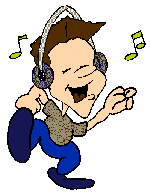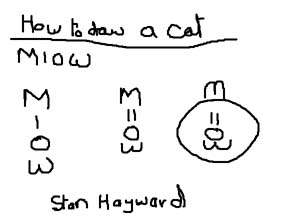
I've just come across an interesting site at
http://www.arts.ufl.edu/ART/RT_ROOM/teach/young_in_art/sequence/scribbling.html dealing with scribbling; the earliest stages of drawing.
I once worked with Special Needs children, and had a 14 year old boy who was brain damaged He had a mentality of a 3yr old, and his teacher dismissed him as unteachable, but I included him in the animation class.
I gave him a pile of paper and coloured crayons, and then asked him to scribble. The end result was a pile of scribbled paper in different colours which I shot as a sequence so they animated. He was delighted, and wanted to do more. Unfortunately I was not able to work with him again, but there is no doubt in my mind that scribbling would have helped him in some way.
Very young children will often scribble a meaningless mess, and when asked what it is, say Mummy, or Rover, or whatever comes to their mind. It is a big conceptual jump for children to associate a mark with person or object.
Another interesting site is at
http://www.bartelart.com/arted/wallscribblers.html which deals with the therapeutic aspect of scribbling.
Not being an animator but needing to draw storyboards, I learnt to do quick sketches by scribbling on scrap paper very quickly to get the feel of the pencil. It's a bit like practising your scales until you can do it without thinking.
I've read somewhere that if you are right-handed, then scribbling or writing with your left hand will develope parts of the brain that other excercises haven't reached.
The drawing at the top was done by my daughter when she was three. She said it was 'A squirrel in its house at the top of a tree'.
She became quite a competent artist though suffering from dyslexia. It is interesting to note that it is common for Special Needs children to be better than average artists, yet this ability is rarely exploited.
On speaking to a teacher about dyslexia, she told me that it is common among criminals, and I am aware of it being common among truants as I've worked with children who have been dismissed from school for truancy.
Typically they were not able to keep up with other children when it came to reading and writing, and were not offered alternative ways to express themselves. Something as simple as scribbling might well offer one contribution to the problem.
Checkout:
ScribblingStan
Labels: Art, Children, Drawing, Education, Psychology









